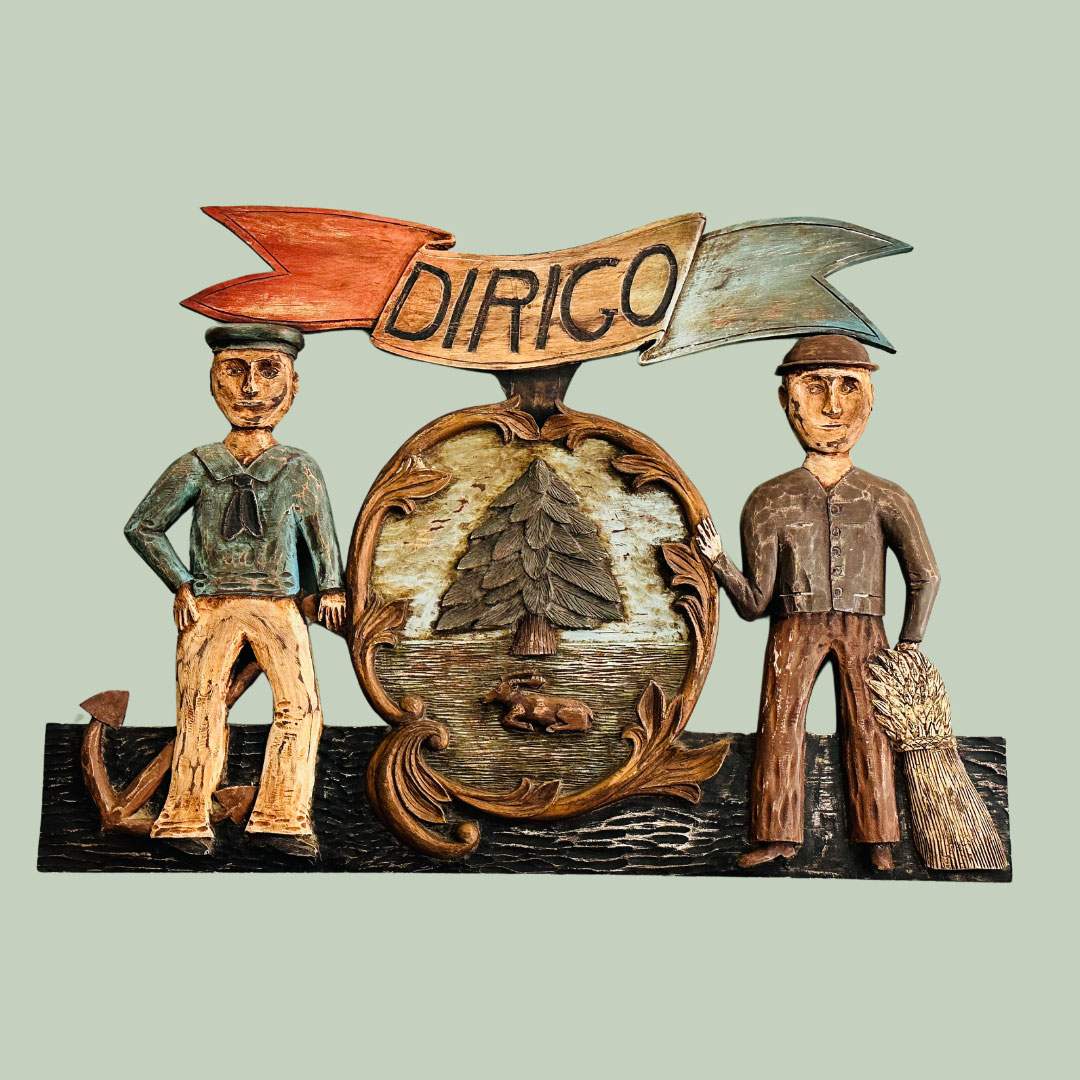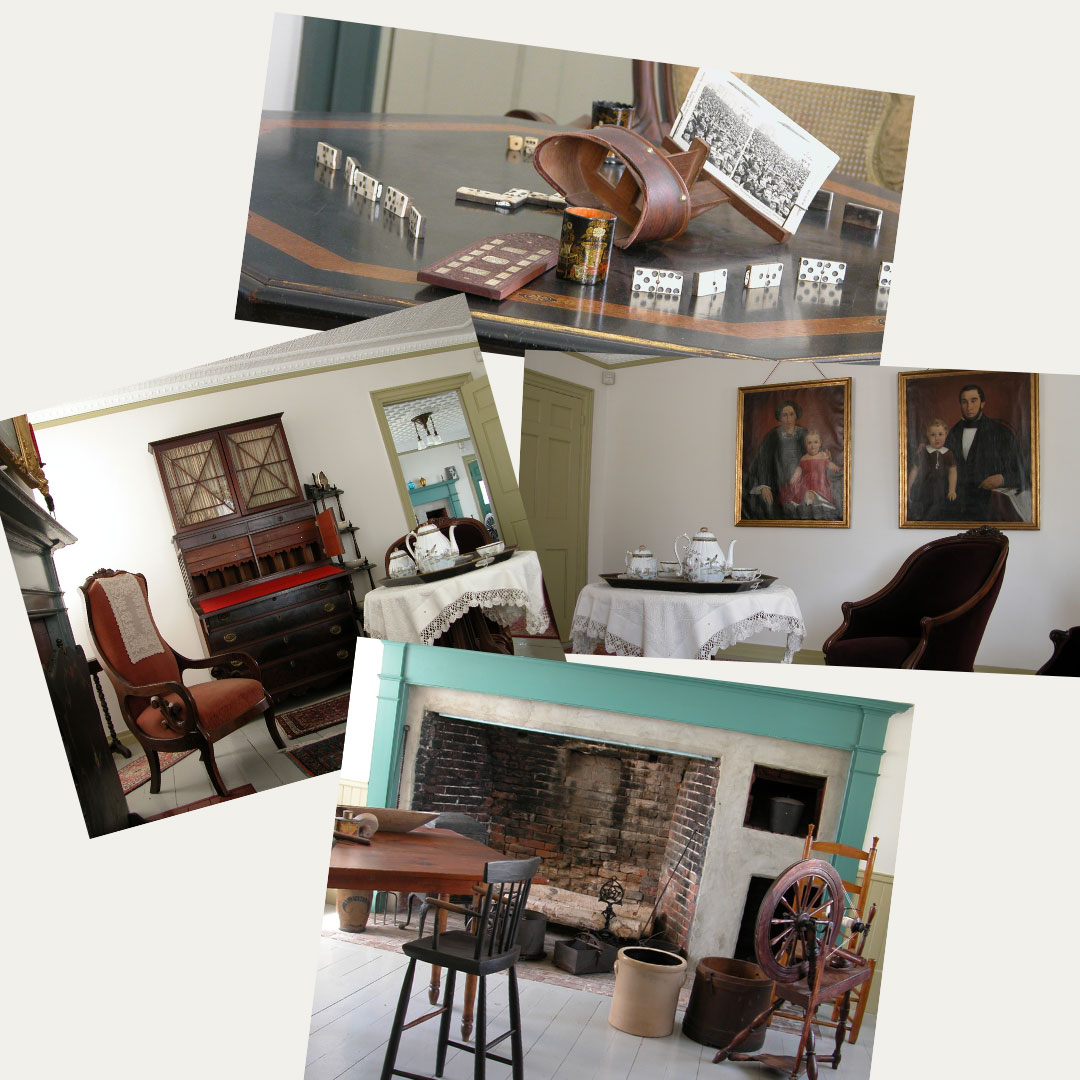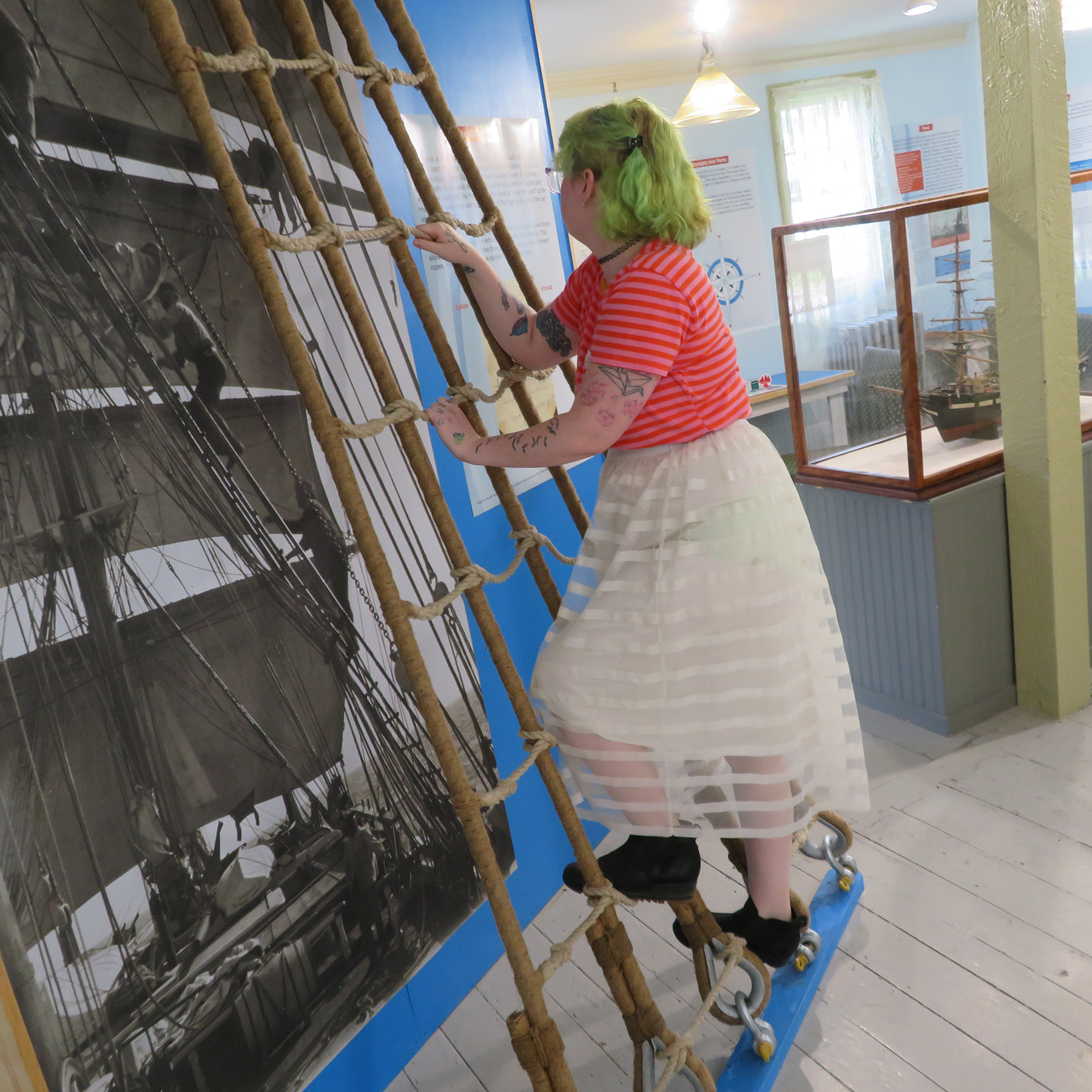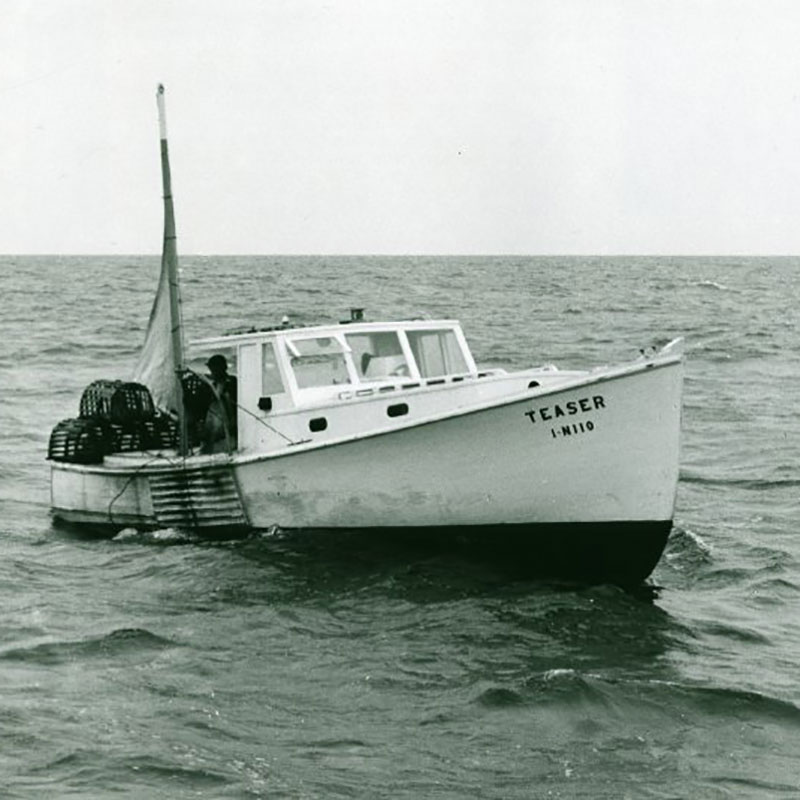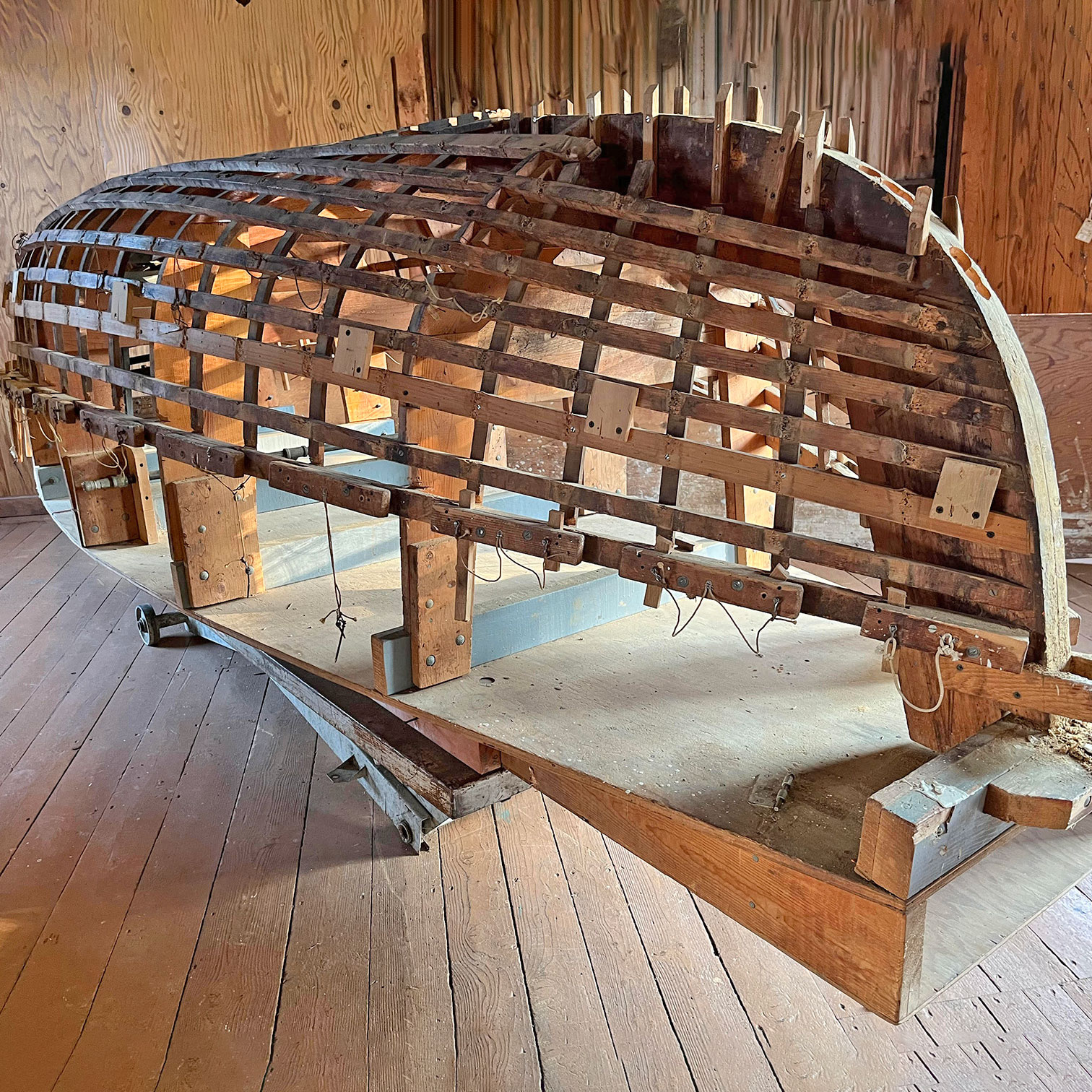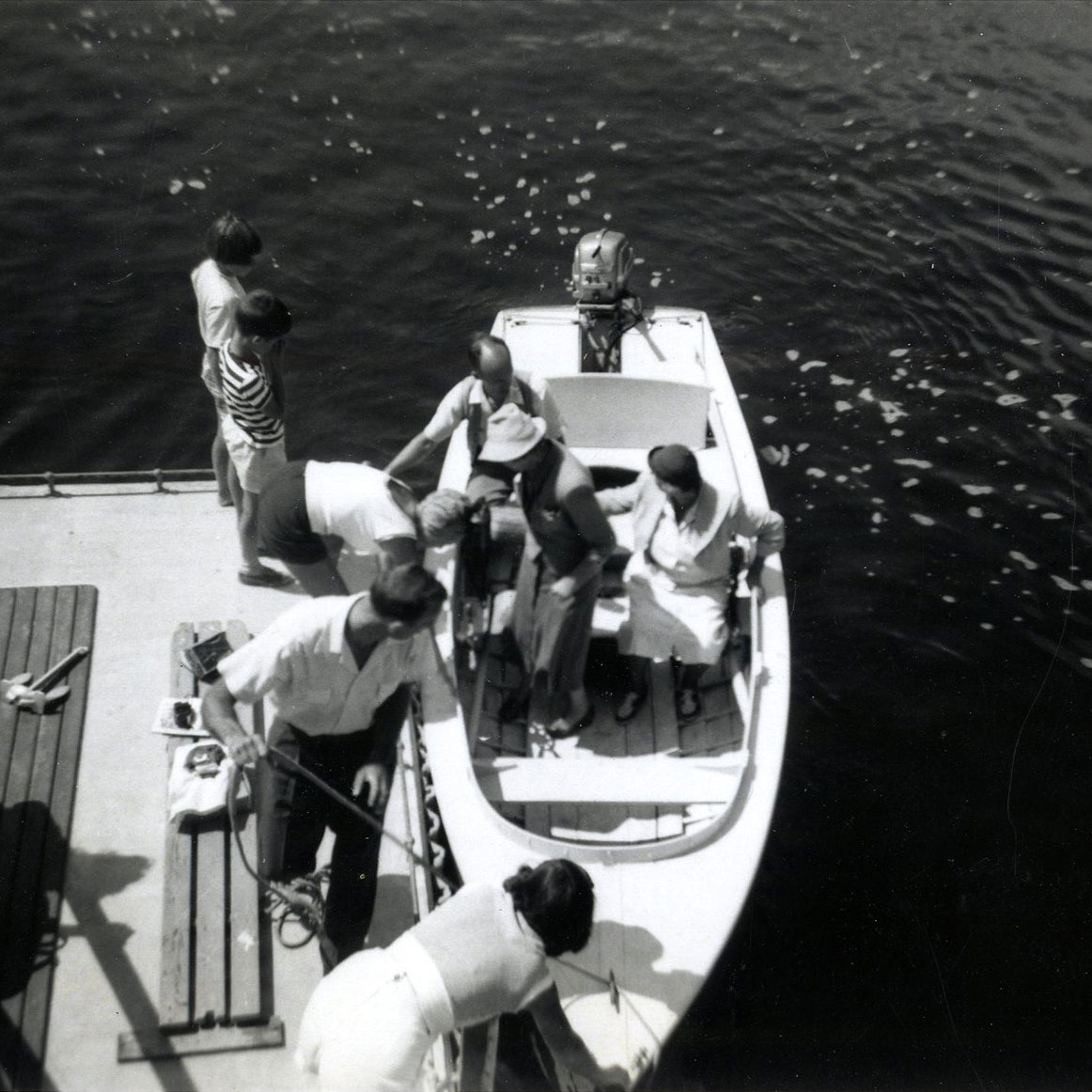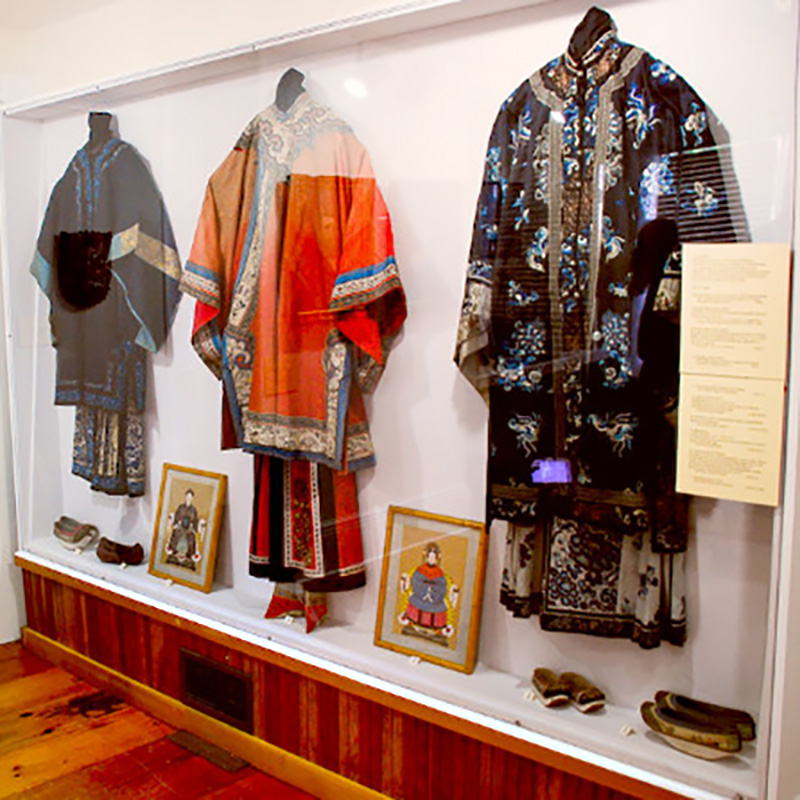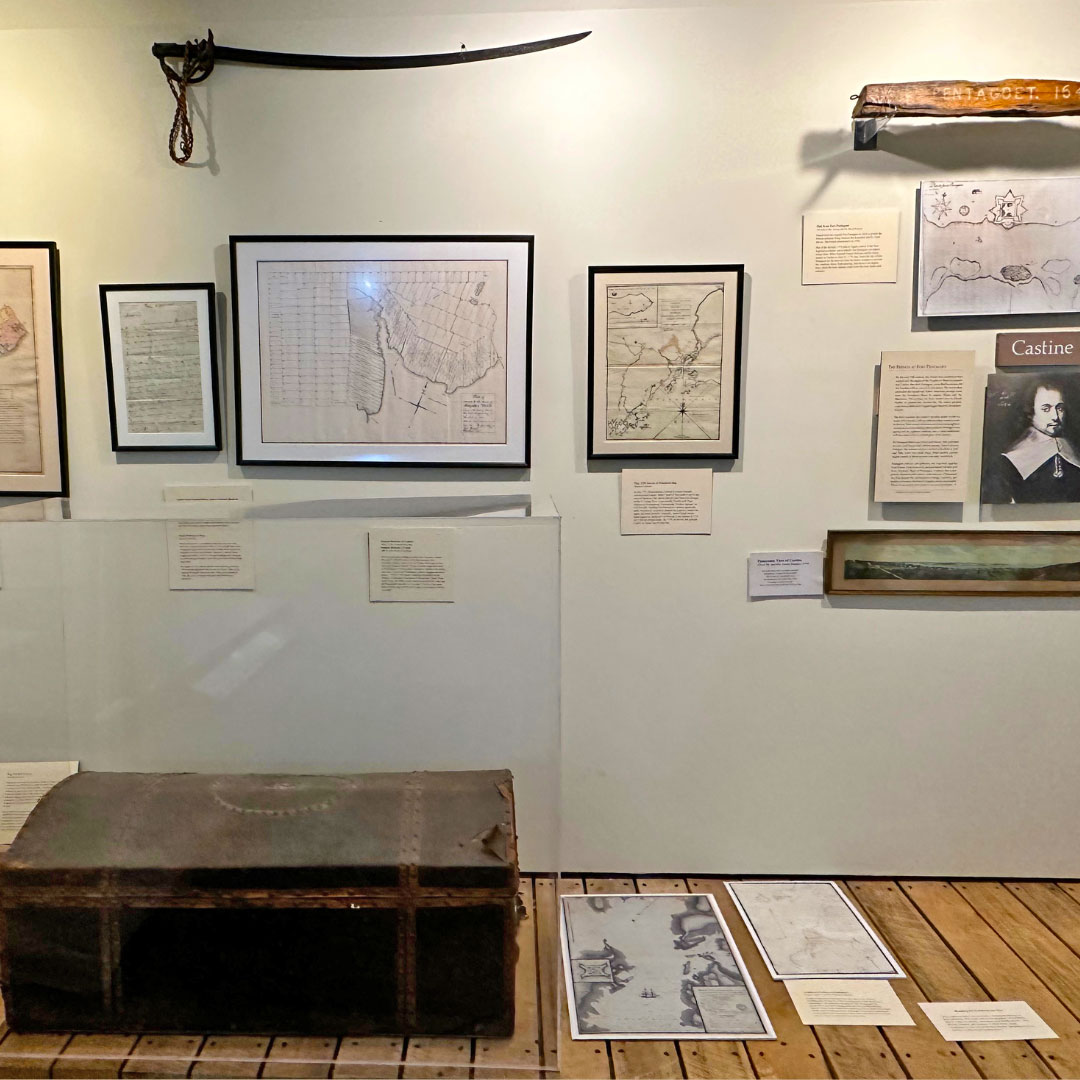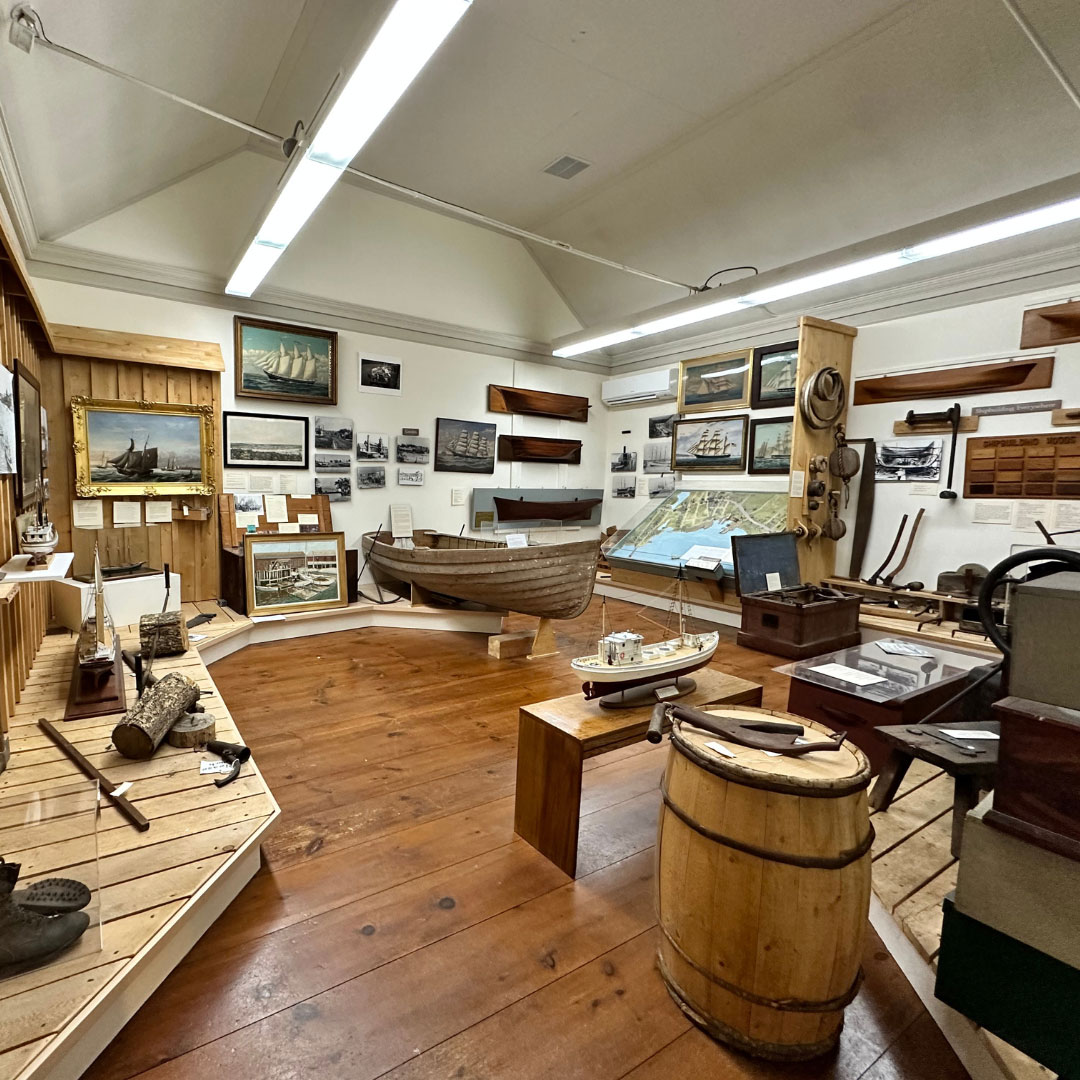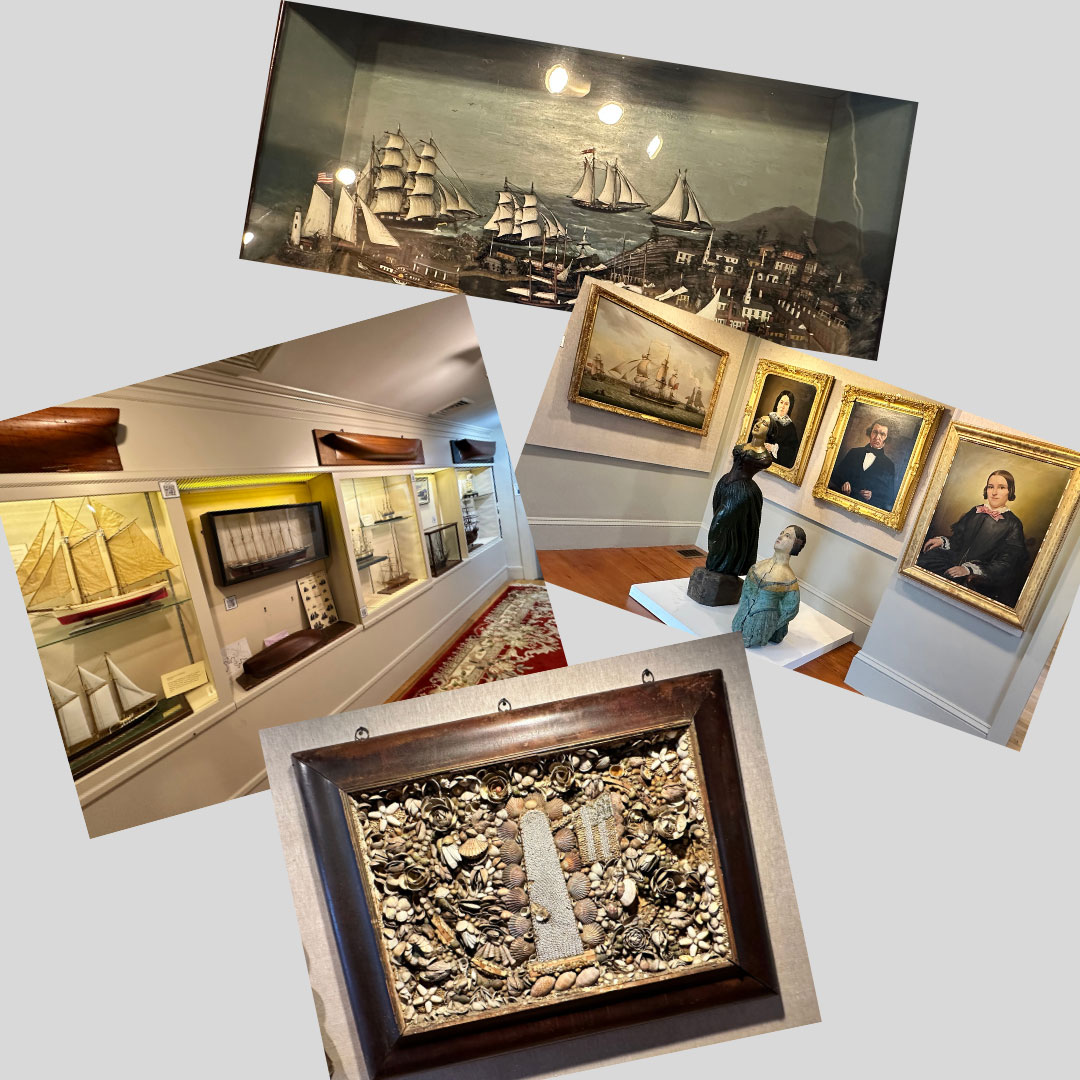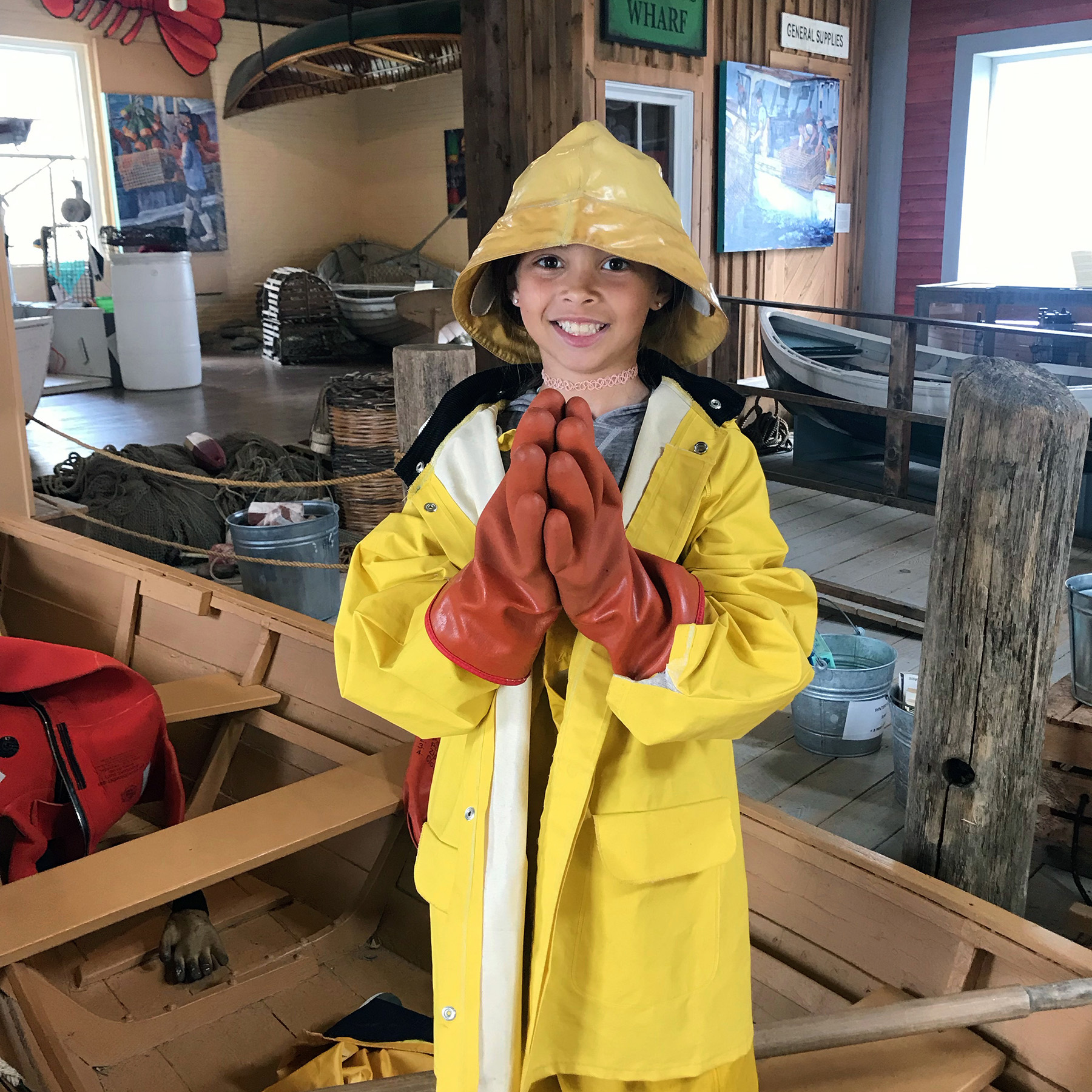Core Exhibits
Always on display at Penobscot Marine MuseumGetting Our Bearings
Explore Maine’s maritime communities through objects, photographs, and primary source documents from the Penobscot Marine Museum’s collections. Getting Our Bearings orients visitors to key themes found throughout our core exhibits including how maritime communities fed the Atlantic work, built America’s Merchant fleet, constructed pre-Civil War America, became America’s Vacationland, engaged in global trade, and served as homeports and homesteads. See how the sea has impacted—and will continue to impact—daily life on and around Penobscot Bay.
Getting Our Bearings has been sponsored by Hamilton Marine and is funded in part by a major grant from the Maine Bicentennial Commission with additional grant support from the Margaret E. Burnham Charitable Trust.
At Home, At Sea: Searsport’s Maritime Stories
Searsport families connected with the sea in many ways. Take a tour through At Home, At Sea to meet the families who maintained Searsport as their homeport, engaged in the shipping industry, and went together to sea. Our interpretive staff share stories of the connections between families at sea and loved ones at home, of loss and misfortune, of miraculous rescues, and of life and work aboard ship. All of these stories come to life through the objects, photographs, and archival materials on display in our historic Fowler-True-Ross sea captains home.
At Home, At Sea has been funded in part by grants from the Morton Kelly Charitable Trust, Margaret E. Burnham Charitable Trust, and Frances R. Dewing Foundation, and through gifts from the many Searsport sea captains’ descendants committed to telling this story.
Crew’s Life
Who is on the Crew? Find out more about the backgrounds and identities of the crew aboard 19th-century merchant sailing vessels in Crew’s Life. We have dug deep in our archives to understand more about those whose stories have gone untold. Through research from Crews Lists, letters and diaries, this exhibit shares information about the crews’ general makeup as well as other aspects of their identity such as religion, traditions, and cultural identities.
Powering Up: The Evolution of the Maine Lobsterboat
Explore key examples from the Penobscot Marine Museum collection that demonstrate the lineage of the boats that bring our state’s iconic catch to the table. This exhibit features four types of vessels that showcase early lobsterboat designs: the dory, peapod, Moosabec Reach Boat, and Friendship Sloop. Displayed alongside these full-sized boats are boat plans, photographs, and model boats that illustrate the internal structure of the lobsterboats we see hauling traps today.
Powering Up has been sponsored by Jonesport Shipyard and funded in part by grant support from Margaret E. Burnham Charitable Trust.
Image: Mount Desert Island boat. Atlantic Fisherman Collection, LB1992.301.265.
Image: Peapod form from the Jim Steele collection.
Jim Steele Peapod Shop
Though lobstermen now favor motorized boats for their work, the classic peapod design has endured as a favorite personal rowboat along Maine’s coast. Learn how this classic design was transformed to meet the needs of the recreational market in the exhibit Jim Steele Peapod Shop. Steele was one of several prominent boatbuilders who took inspiration from lobstering’s double-ended peapod to expand into the recreational market. Tools, patterns, and finished peapods from Steele provide a window into his inventive Brooklin boatshop, while additional peapods show the creativity and breadth of this Maine design.
Jim Steele Peapod Shop has been funded in part with grant support from Margaret E Burnham Charitable Trust.
Sponsored by:
Pam Steele
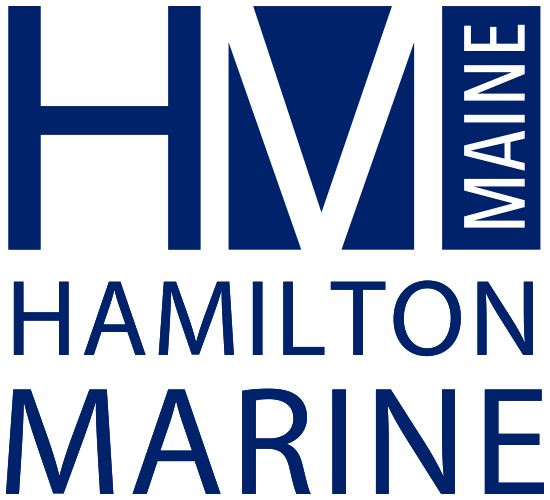
Rusticators on the Water
When Rusticators flocked to Maine in the late 19th to mid-20th centuries, they sought a rustic vacation to retreat from their busy city lives. To get on the water, they commissioned locally-built small wooden boats: rowboats for exploration, daysailers for picnics, and racing boats for yacht club competitions. Walk through our boat barn exhibits to see the Maine-built boats at the heart of the rusticating culture and explore their enduring impact in Rusticators on the Water.
Rusticators on the Water has been funded in part with grant support from Margaret E Burnham Charitable Trust.
Image: Penobscot Marine Museum’s Lincolnville wherry CUNNER heading out for a day trip. 1995.23
Art of the Sea
Thomas Buttersworth Sr., his son Thomas Jr. and grandson James, were all masters of marine painting, skilled at highly detailed and accurate images. In Art of the Sea, immerse yourself in the exciting action scenes these three generations of artists created. Like artists found in most major 19th century ports, the Buttersworths painted ship portraits commissioned by their clients. They used their rich imaginations to create remarkably accurate depictions that brought them a wide audience appeal.
In addition to the Buttersworth art on display in the Merithew House, Penobscot Marine Museum features marine art throughout our campus. We have a renowned collection of marine paintings, ship portraits and port paintings from around the world, ships’ figureheads, folk art, dioramas and shadowboxes. Artists in our collection include premier European, Asian and American artists, as well as recognizable local artists such as Percy Sanborn, William P. Stubbs, Waldo Peirce and Dolly Smith.
Souvenirs from Foreign Ports
The sea captains of 19th century Searsport were like other travelers collecting souvenirs from distant lands. In Souvenirs from Foreign Ports, see what local seafarers brought back as gifts to family and friends or as reminders of their voyages. Items include a pair of bronze “Fu” dogs, elaborately embroidered Chinese costumes, children’s toys and games, whimsical wood miniatures of Chinese life and paintings of people and ships.
Battle for Penobscot Bay
One of the worst American naval defeats took place in Penobscot Bay during the Revolutionary War in 1779; one that many people have never heard of. In Battle for Penobscot Bay, learn about the Penobscot Expedition through an interactive diorama, paintings, maps, artifacts and documents, including the private papers of Dudley Saltonstall relating to his court martial.
Working the Bay
Explore the industries of the Maine coast in Working the Bay. The laborers of Maine extracted its bountiful resources of rock, ice, fish and lumber and shipped them abroad on vessels built along the coast. Much of the work was done by hand, without the aid of steam, gasoline, or electrical powered tools. On exhibit are many of the tools used to cut and split granite, harvest ice, catch and process fish, fell and transport lumber and build a ship in this exhibit. Photographs and paintings, including a Fitz Henry Lane painting depicting a lumber schooner, help tell these stories.
Seabag Visible Storage
Get a glimpse behind the scenes in Seabag Visible Storage. Taking its name from the bags sailors use to carry their personal belongings and gear, this exhibit is filled with a variety of items from our collections. Discover paintings, photographs, full and half boat models, souvenirs, charts, tools and other artifacts selected from the museum’s storage areas.
Seabag Visible Storage was funded with grant support from the Davis Family Foundation.
Gone Fishing
From lobsters to sardines, Maine’s fisheries define and influence the state’s history, economy, and culture. In Gone Fishing, learn about the early days of hand-lining, how to catch a lobster, how to dress for sea, and different kinds of boats and gear. Go aboard a real dory and replicas of a lobster boat and sardine carrier and imagine yourself as a working fisherman.
Gone Fishing has been funded by The Maine Humanities Council, The Gardner Charitable Trust, The Morton-Kelly Charitable Trust, The Davis Family Foundation, and Linda L. Bean.

